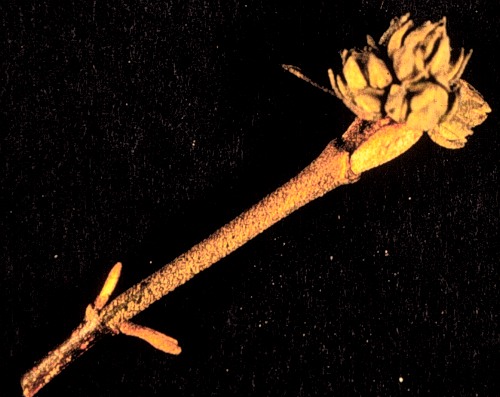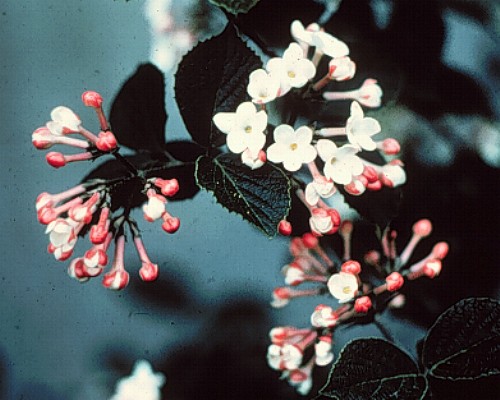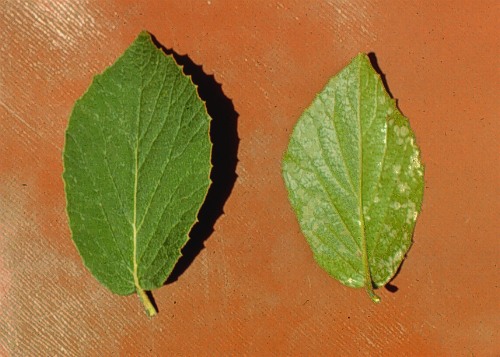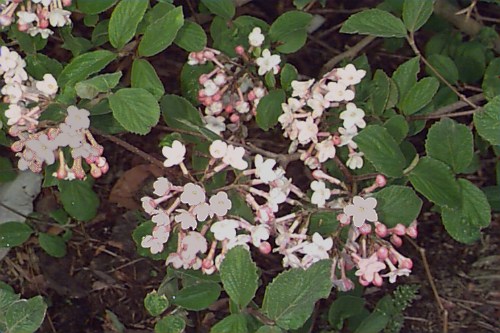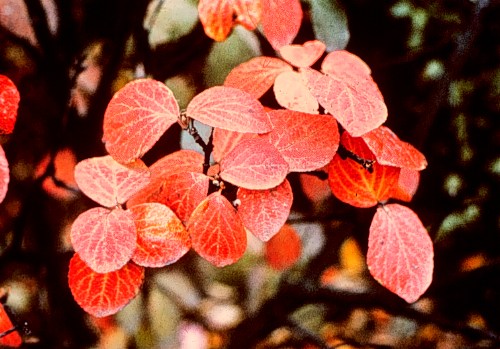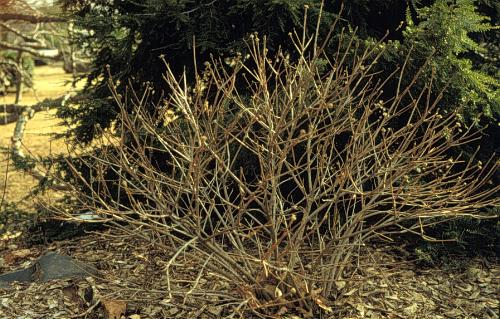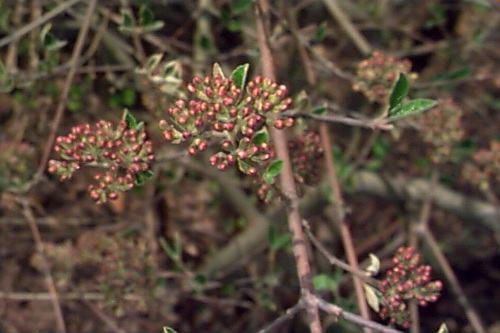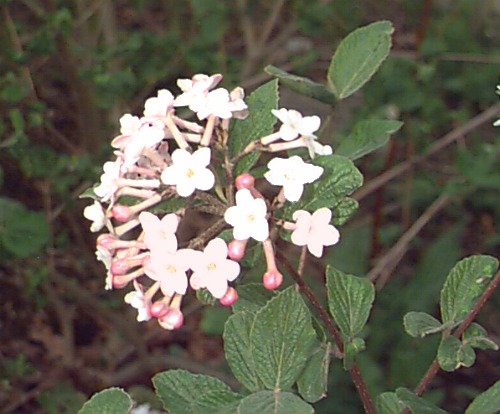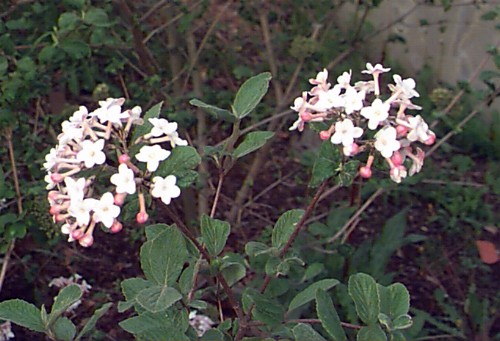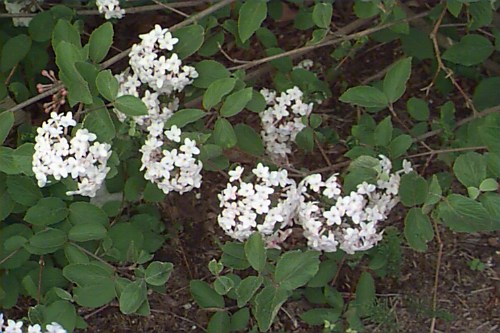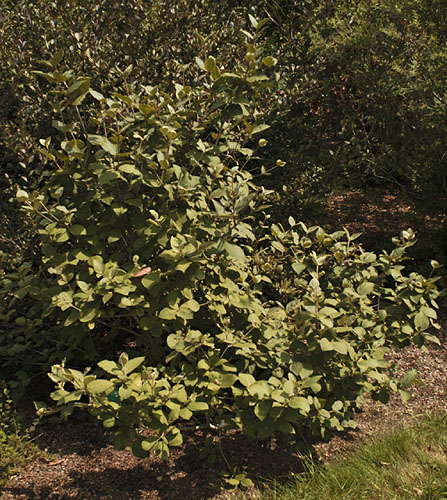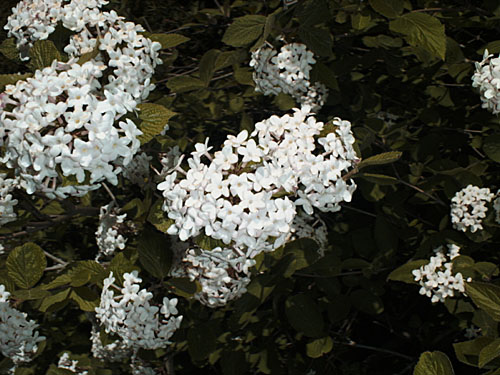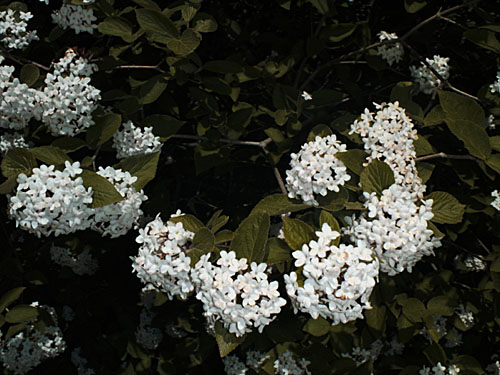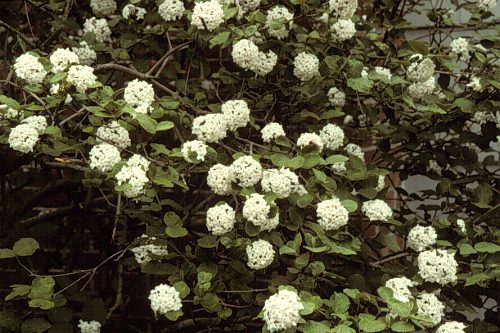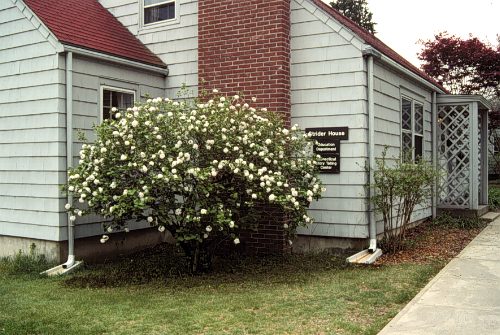Viburnum carlesii
Koreanspice Viburnum
Caprifoliaceae
ExpandHabitat
- native to Korea
- zone 5, or warmer parts of 4
Habit and Form
- a deciduous small shrub
- multistemmed
- 4' to 6' tall with an equal width
- rounded shrub with upright spreading branches
- slow growth rate
- medium texture
Summer Foliage
- deciduous leaves in an opposite arrangement
- simple leaves with irregular toothing
- elliptical leaf shape with rounded leaf base
- 2" to 4" long and 1" by 2.5" wide
- dense pubescent on underside of leaf with some pubescence on upperside of leaf as well
- dull green color
Autumn Foliage
- reddish fall color
- not reliable
Flowers
- perfect pinkish white flowers
- individual flowers are small only 0.5' in diameter
- blooms late April
- flowers are borne in dense cymes, up to 3" in diameter
- fragrant
Fruit
- small, egg-shaped drupe
- red maturing to black
- matures August to September
Bark
- gray and fissuring
- young stems have pubescence
- two types of buds; vegetative and reproductive
- vegetative buds are naked and downy
- reproductive buds are large clusters
Culture
- prefers well-drained, mildly acidic soil
- full sun to partial shade
- flowers on new wood
- buy plants on their own rootstocks to avoid sucking
Landscape Use
- shrub borders
- for fragrant flowers
- mass plantings
- for fruiting effect
Liabilities
- bacterial leaf spot
- nematodes
- rootstocks tend to sucker
ID Features
- fragrant flowers
- vegetative buds are naked and downy
- reproductive buds are large clusters
- small, black, egg-shaped drupe
- deciduous leaves in an opposite arrangement
- simple leaves with irregular toothing
Propagation
- by cuttings
- by seed
Cultivars/Varieties
'Aurora' - A newer selection that is gaining a foothold in American horticulture, this selection has a superior floral display. The clusters are larger with pink-white blooms that open from deep pink buds. The fragrance is very strong. The plant grows larger, to 8' tall.
'Compactum' - A very fine plant that was originally introduced by a Rhode Island nursery in 1953, this dwarf form offers fragrant spring blooms on a plant that seldom exceeds 3' tall and wide. The foliage is a healthy dark green and disease resistant.
'Cayuga' - This hybrid selection (with V. carlcephalum) was introduced by the U.S. National Arboretum and is considered a superior plant. It is a larger, dense grower that reaches 5' tall with reddish fall color. Early spring is greeted by white flowers arranged in globular cluster that emerge from pink buds.
